#IRA First Cork Brigade
Text
#OTD in 1921 – The Clonmult Ambush | Twelve IRA volunteers were killed in Clonmult, near Midleton, Co Cork by British soldiers and Auxiliaries.
Irish Republican Army volunteers occupying a farmhouse in Clonmult, Co Cork were surrounded by a force of British Army, Royal Irish Constabulary and Auxiliaries. In the action that followed, twelve IRA volunteers were killed, four wounded and four captured. A total of 22 people died in the ambush and subsequent executions – 14 IRA members, 2 Black and Tans and 6 suspected informers.
The 4th…
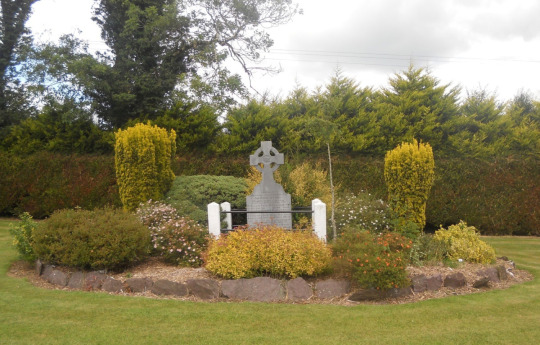
View On WordPress
#4th battalion#Auxiliaries#Black and Tans#British soldiers#Clonmult Ambush#Co. Cork#Crown Forces#Diarmuid O&039;Hurley#History of Ireland#IRA First Cork Brigade#Ireland#Irish History#Irish War of Independence#Maurice Moore#Midleton#Paddy O&039;Sullivan#RIC
7 notes
·
View notes
Text
Gold Conferences

One of the awards Béaslaí gained during his profession was on 14 August 1928, Béaslaí a gold medal at the Tailteann Literary Awards. Whereas living in London he studied legislation at King's College London but did not end. Collins was criticised for these tactics however cited the universal struggle-time apply of executing enemy spies who have been, in his phrases, "hunting victims for execution." Campaigning for Irish independence, even non-violently, was nonetheless targeted both by prosecutions below British law entailing the death penalty and in addition by extrajudicial killings such as that of Tomás Mac Curtain, nationalist mayor of Cork Metropolis.
youtube

A founding member of The Irish Volunteers in 1913. In January 1916 he served as a courier for political activist and revolutionary chief Seán Mac Diarmada. The wrestle for House Rule, together with labour unrest, had led to the formation in 1913 of two major nationalist paramilitary teams who later launched the Easter Rising: the Irish Citizen Army was established by James Connolly, James Larkin and his Irish Transport and Common Workers Union (ITGWU) to protect strikers from the Dublin Metropolitan Police during the 1913 Dublin Lockout. The military made its first public look on 31 January 1922, when command of Beggars Bush Barracks was handed over from the British Military.
Irish Free State's Government. The Irish Free State's area was divided into 9 commands. Heavy fighting broke out in Dublin between the anti-Treaty IRA Dublin Brigade and the Free State troops. In contrast to their rivals in the Irish Parliamentary Social gathering, Sinn Féin MPs had introduced that they would not take their seats in Westminster but as an alternative would arrange an Irish Parliament in Dublin. Throughout is gold ira a good investment of the 2008 season, White set the NCAA speeding yardage report for quarterbacks with a 200-yard efficiency in a 35-21 win over Louisville. The Puskar Heart underwent significant renovations in 2012 and 2013, aimed specifically at improving the load room, the aesthetics of the facility's inside, lounge space for the football gamers and upgrading the coaches' meeting areas. Further renovations to the Puskar Center are planned for the long run as a part of WVU's grasp plan for athletic facilities.
Additionally constructed in 1980 was the "Services Building" (now the Milan Puskar Heart) to house this system's soccer workplaces. best gold ira rollover companies utilize two services for indoor and out of doors soccer practices, the Caperton Indoor Practice Facility and the Steve Antoline Household Football Follow Area. The construction of Outdated Mountaineer Discipline in 1924 gave WVU its first permanent residence facility. The Mountaineers continued their success below Spears in posting subsequent one-loss seasons in 1923 (7-1-1) and in 1924 (8-1), with Spears departing the program for Minnesota thereafter. gold ira companies in texas of thousands of mourners filed previous his coffin to pay their respects, including many British troopers departing Eire who had fought in opposition to him. As with all enterprise involving transactions, widespread complaints have been filed with the higher Firm Bureau also as many shopper teams.
0 notes
Text
Remembering Óglach IRA Liam Healy executed by Free State forces - Co Cork, 13th March 1923
Remembering Óglach IRA Liam Healy executed by Free State forces – Co Cork, 13th March 1923

Óglach Liam Healy executed 13th March 1923
Remembering IRA Volunteer Liam Healy who was taken from his cell and executed by Free State forces in Cork on 13th March 1923.
‘If I had told on one of the boys, I would not be executed but, as you know, I would not have it said that there was a spy in our family, because as you know I was out for a Republic and I sincerely hope it will be got some day,’…
View On WordPress
#&039; If I had told on one of the boys#13th March 1923#and seventh in a family of 12#as you know#Óglach Liam Healy executed 13th March 1923#because as you know I was out for a Republic and I sincerely hope it will be got some day#Cork Number 1 Brigade in 1918#Donoughmore in 1900 of farming stock#E Company#First battalion#He took part in many of the Volunteer activities and was involved in the attacks on Blarney Police Barracks and the attack on all City Polic#he wrote#Healy attended Firmount National School and moved to Cork aged 18 and worked as a farm labourer for a cattle exporter in Blackpool#Healy enlisted in the Irish Volunteers#I would not be executed but#I would not have it said that there was a spy in our family#Initially buried in Cork Gaol his body was handed over to his relatives in 1924#Remembering Óglach IRA Liam Healy executed by Free State forces - Co Cork#Remembering IRA Volunteer Liam Healy who was taken from his cell and executed by Free State forces in Cork on 13th March 1923#who was born in Lackabawn#William Healy#With many thanks to: Richard Steele for the original posting
0 notes
Text
The Celtic Tiger - A Kaiserreich Ireland AAR Chapter 2: An American Tragedy
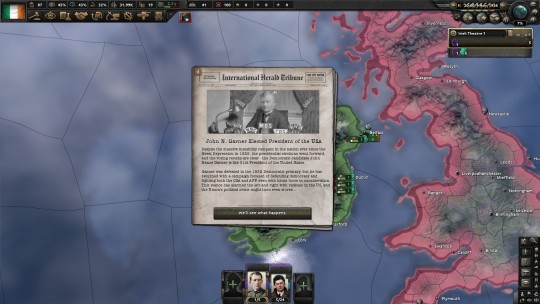
12 February 1937 - Home of Michael Collins, Cork, Ireland
“The United States of America has faced challenges since its founding, but it is an enduring republic. When we were invaded, we fought off our attackers. When the Great Storm hit Galveston, we built cottages from the storm lumber. When Black Monday reached our shores, we passed the Garner-Wagner Act to deliver our people relief. The American people, through this election, have made their will clear. They do not want the empty promises of Jack Reed. They demand more than the sayings of Huey Long. Words are not enough, action is required. That is what I shall promise: action. We will stand firm against the threat of populism and syndicalism.”
Benjamin Franklin, after the Constitutional Convention, was asked whether the United States was a democracy or a republic. His words were: ‘a republic, if you can keep it.’ That was not mere wit, but a charge; a sacred duty given to every citizen. Today we say: it is our republic, and we shall keep it.” -US President John Garner, Excerpt from Inaugural Address
In Michael Collins’s case, war never seemed to have a countdown, but sure enough, the war looked like it would begin in 30 days. Just the thing to ruin his vacation; he had hoped to spend a few days in Cork to recharge his batteries, and ended up having indigestion and headaches the entire trip.
The United States had been a roiling mass of discontent since 1925, but it had only gotten worse during Black Monday. President Garner had won a lot of support in his campaign, which had focused on trumpeting the successes of the Garner-Wagner Act and touting the President’s willingness to fight any who threatened democracy. “A snake is a snake is a snake,” Garner had been fond of quoting on the campaign trail, swaggering with a pair of revolvers. “I plan on working to fix the mess that we’ve found ourselves in. If Jack Reed and Huey Long want their voices heard, I’ll listen to them. If they want prosperity for America, they’ll listen to me. And if they want to fight, they’ll get one. I don’t plan on striking first, but as God is my witness, I’ll be striking last!”
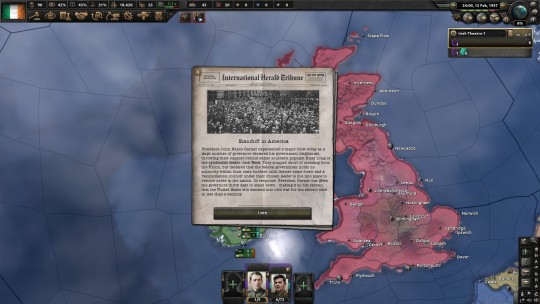
That had been enough for the Presidency. Jack Reed’s Socialist Party of America and Huey Long’s America First Party had strong regional support, but neither movement received enough votes to beat the Republican candidate Alf Landon, let alone Garner. Yet the victory was narrow, and both candidates claimed voting irregularities arranged at the polling places by supporters within the state voting commissions, along with other accusations of beatings and intimidation campaigns. Herbert Hoover endorsed Garner in a show of cross-party American solidarity, and Landon himself was a guest of honor at Garner’s inauguration. Garner had already promised the Republicans some Cabinet appointments in the hopes of building a coalition government strong enough to stop Long and Reed. It was an uphill battle; the 1936 voting season had been marred by political demonstrations turning violent, they had even called it the Red Summer, and now Long and Reed were railing against the legitimacy of the vote.
When the populists had made their accusations, the governors in their regional strongholds had backed Long and Reed. The populists, it seemed, had called President Garner’s bluff. The governors demanded a “national reconciliation council” under their talking head, and both had made it plain that the other would not be welcome on it, making it all but certain that war would come, and it would not be small. Jack Reed was popular in the Steel Belt and Huey Long had an almost religious appeal in Louisiana and in the rest of the Southern United States. Reed had much of the industrial heartland, but Long had far more pull among the military including high ranking officers. It wouldn’t be an easy fight, no matter what Texans had to say. In both ways, it was bad for the United States.
Collins had hoped it wouldn’t be war, but he was sure that it would be. If Jack Reed was able to successfully overthrow Garner, the Internationale would be emboldened. The Communards might still be reluctant to face Germany, given how large such a war would be, but Mosley would almost certainly want to snap up Ireland to carry forth syndicalist momentum. Anti-Irish rhetoric had only intensified in the months following Ireland’s meteoric 1936 rise, with Mosley claiming that Michael Collins had become “every inch the oppressive king he fought against.” Collins laughed when he was first told it, but as the days went on he seethed against the man, wishing he could have five minutes alone in a room with him. He was sure his sainted ma would not look fondly on him for beating on a man with a limp, but she’d forgive him.
When the reporters asked for a quote, Collins was sure to give them one. “Look at Mosley in the war. Gallivanting around in an aeroplane like war was just boys at camp, crashing trying to be a showboat. I suppose I must be kind, he tried to prove he was a brave man, I’m sure it’s not his fault he ran behind a desk before a year was out. That’s where he’s most comfortable, hiding and sipping his gin while he sends young boys to do the fighting and dying.”
Collins had a good laugh, but he made sure to tell his diplomatic service to make sure that Ireland would have plenty of friends on both sides of the Atlantic, just in case the Union tried anything. Laugh in public, but service your pistol in private.
---
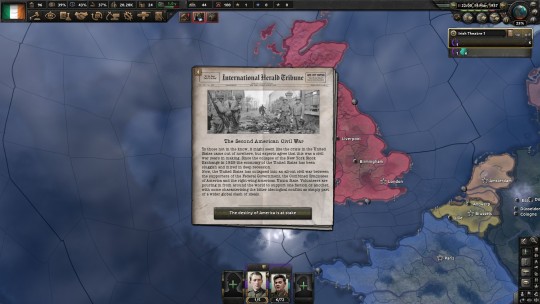
14 March 1937 - Áras an Uachtaráin, Dublin, Ireland
It was war. The entire world was aflutter with the news that the United States had descended into a civil war. President Garner’s deadline had come and went, and both Jack Reed and Huey Long had declared war on the United States. In response, Garner had appointed General George Marshall as Chief of Staff of the Army. The Internationale had already voiced its support for Jack Reed, with Chilean, Communard, and Union supporters already on their way to support the newly-formed Combined Syndicates of America. The German Empire was far more reserved in its support. German-Americans primarily lived in areas controlled by the Combined Syndicates, and the United States government had primarily conducted a pro-Entente policy during the Weltkrieg, leading the Kaiser to support Huey Long out of pure pragmatism. Canada had fallen into debate within the Houses of Parliament on who they were supporting.
Collins had no such reservations about debating who to support in the Dail. Collins had sent out a call for a volunteer division, the 1st Thunderbolts, and had placed them under the command of Daniel McKenna. The East Coast was dense with urban areas, and McKenna was just the man to fight in that difficult urban war, having fought the English in the cities before. The Thunderbolts had been training for months in preparation for the outbreak of hostilities. Most were young men, too young to have seen the Independence War, but their officers and senior NCO’s had. That would carry them, fighting in unfamiliar territory would mean they would have to adapt quickly and rely on the experience of the leaders. Other IRA volunteers, particularly those with families in the United States, had opted to go there themselves, fight in the American army, and return later.
The first target would have to be the syndicalists. With their position in the American industrial heartland, they’d have the manufacturing prowess and the civilian manpower to build and repair war materiel far faster than the mostly rural southern states. They would have to trust in their greater manpower and equipment to hold the southern front against the aggressive generals of the American Union State. The United States had begun mobilizing forces on the West Coast to get them to move east, and requisitioned several rail lines for exclusive military use, but it would be hard fought. America was going to need all the help it could get.
---
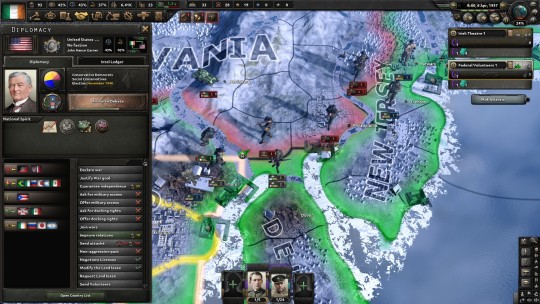
13 April 1937 - Northern Maryland, United States of America
“We have traitors to our left, and traitors to our right
Our Congress and our president have long since taken flight
No ammo, no armor, no pills, no cargo
No prayers, no chance, no hope of tomorrow
Just you and me and a hell of a lot of fight.” -Frank McHewlitt
Pennsylvania had become a battlefield for the Second American Civil War just as it had for the first. The Pennsylvania governor had declared for Jack Reed, but the Federals had made a march into central Pennsylvania, seizing York to Fulton counties, but lack of manpower, difficult terrain, and Communard volunteer tank brigades had ensured any excursion was short-lived. From New York to the Midwest was controlled by the Syndicalists. Fearing being overrun, Joseph Kennedy Sr. had asked Canada to send an occupation force to protect them from the Syndicalists. This had infuriated President Garner, but pragmatists in his Cabinet had argued that the region was indefensible since the Syndicalists held New York, and better that the Canadians occupy it, and the Combined Syndicates risk a war with the Entente, than the factories be taken over by Jack Reed. Further south, Canada had sent a force to occupy the Panama Canal after the Americans had withdrawn their garrison force. The Canadians had said their mission was to protect trade, but had banned ships flying Communard, Union, or Chilean flags.
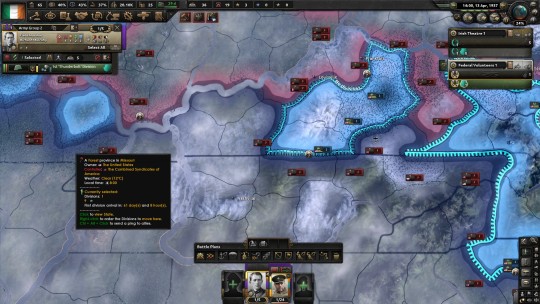
Further south, Texas to the Carolinas, and everything south, had pledged loyalty to Huey Long’s vision. Several companies had even signed on to the “Share Our Wealth” program. His men were heavily-armed and competently led, and they had already made significant inroads pushing north into Kentucky from Tennessee, even making contact with and fighting Jack Reed. George Patton had been named the overall commander of the American Union State, and on land the America First Party had shown themselves to be exceptional fighters pound-for-pound. Their goal had been to push and seize whatever territory they could, to turn the factories over to Longist control and get their war materiel production up to match the Federals and the Syndicalists. It had been remarkably successful, Patton’s armor techniques had run circles against disorganized Kentucky militia and revolutionary syndicalists alike. Already there were unconfirmed reports of mass shootings of CSA prisoners by AUS irregulars. The Federals were hard-pressed, often surrounded and potentially encircled by hostile forces in Kentucky. Only the chaos of the war and the close proximity of all three forces, kept them from being killed outright. Desertions, particularly from militia unfortunate enough to be in the encircled regions, were high.

Washington was no longer the capital. With Maryland under fire and the Firsters pushing from the south into Virginia, Garner had decided to temporarily move the capital to Denver, where he could oversee the political business of state. MacArthur had elected to remain in place as the commander of the East Coast Enclave, suggesting that Dwight Eisenhower take command of the main Federal forces in the Midwest. “He’s a Kansas man, there’s no man better in command from the Midwest. The troops will fight tougher and harder if they know we haven’t abandoned them. Don’t worry, Mr. President. Those bastard traitors won’t set a foot in D.C.” With his trademark corn cob pipe and a wave to the press, MacArthur took a ride on a Vultee V-1 to take up command, with Eisenhower being named the overall commander of Army Group West, with the goal of pushing east from Kansas into Missouri.
MacArthur welcomed the service of the volunteers sailing and landing on the Chesapeake, no traitor forces had been able to ensure naval supremacy on the East Coast and none were willing to risk firing upon a flagged vessel and invite any nation’s full-blown entrance into the conflict. Lavr Kornilov, eager to project strength and stability after the assassination of President Kerensky. Hirohito had also dispatched volunteers citing the strong relationship between the United States and Japan and the need for legitimate government to be re-established in the United States to project stability in the Americas. Calles in Argentina, eager to re-establish the Monroe Doctrine to act as a bulwark against the Patagonian Worker’s Front, and always eager to fight syndicalists. Brazil likewise had ordered troops to support the United States. Mexico, eager to avoid any war spilling over their borders, had closed the borders to the American Union State and had sent divisions through the Gulf of Mexico before the Longist navy could seize control of the waters and potentially cut off trade and transit. MacArthur ensured that each division had several bilingual Americans to serve as liaisons and communications personnel. He couldn’t command the volunteers, but he did demand adherence to military law and that any abuse of US civilians or military personnel would be dealt with by firing squad. Similarly, MacArthur promised his own men that they would be punished harshly if they stole from or fought with Federal volunteers. Regular correspondence was mandatory, and passwords changed regularly to allow foreign soldiers to identify themselves quickly to friendlies, passed via radio operators who had signed up with the Federals in record numbers when President Garner forced a bill and executive order expanding the civil rights of Native Americans to shore himself up for the upcoming emergency. The Navajo Nation, who provided one of the largest units, dispatched signals operators to coordinate with the volunteer brigades, providing exceptional communications security and coordination between the Federals on both fronts.
Yet things were not going well. MacArthur had enforced military law within the East Coast enclave, and garrison forces frequently looked to seize supplies and materiel for their war effort. Oftentimes, a token effort at compensation or promise of restitution to come later was the only balm in Gilead; it did not help those who starved.
The volunteer forces moved north to the Mason-Dixon line, where the Combined Syndicate militia were threatening to move south into Maryland from their regional headquarters in Philadelphia. The Russians opted to secure themselves in Baltimore, while the Argentine and Mexican forces moved to Cecil County to secure Delmarva from the syndicalists seizing the east bank and potentially cutting off vital access to the Chesapeake. McKenna and the Irish 1st Thunderbolt, acting aggressively, crossed into Pennsylvania and secured themselves in York. Not willing to pass up a fight, Russian and Irish volunteer brigades pushed into Lancaster County, threatening Philadelphia and forcing the Communards to reinforce their position lest Philadelphia fall and the road to New York be pushed wide open.
---
17 April 1937 - Economic Committee of the Dail, Dublin, Ireland
It had been a constant flurry of activity in the new year. The Dail was debating loosening immigration restrictions to help bring in new blood to help support Ireland’s effort to modernize. Even if good policy and hard work had led Ireland out of the depression following Black Monday, manpower was still the hard limit on everything they could do. Once unemployment fell, there would be no new employees for businesses, and they’d turn away from Irish investment.
There had been two major sources of pushback against immigration reform. The Unionists in Ulster had been vocal opponents, calling the efforts part of a planned demographic shift to stock the north with people that would sideline their concerns as Unionists. Their proposal had instead suggested an increase in immigration from select countries, notably Canada, Australasia, and the British Dominion of India. Gearóid Ó Cuinneagáin was far more hostile to immigration overall, demanding no immigration save from Celtic-majority countries, particularly those who wished to depart the Union of Britain from Scotland and Wales. Some of the measures proposed had truly been radical, such as instituting a Gaelic language entrance exam to new immigrants. The hAiséirghe crowd had always been a touchy subject, they had enough support in Munster that they couldn’t be ignored as much as Collins wanted to throw the bastards into the ocean.
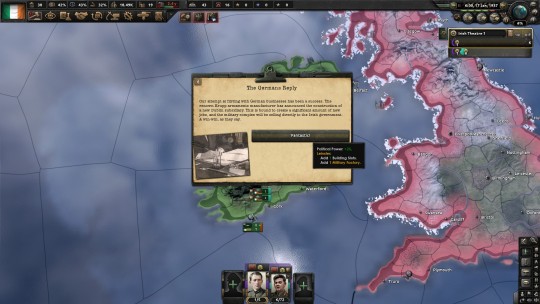
Collins had been lucky, his Dublin financial capital idea had already been receiving positive responses. The German Kaiserreich, still deep within the throes of Black Monday, had debated whether or not to permit German businesses to invest in Ireland. The protectionists in their government had argued that the last thing that they needed to do was open up subsidiary companies in Ireland and send work away from Germans. The market liberals were far more enthusiastic, suggesting that the profits made could be reinvested in Germany; an influx of cash that wouldn’t increase the money supply and devalue the Mark. In the end, Wilhelm II had agreed to the proposal. He had known that the Irish Republican Army had been looking to re-equip their forces, and Krupp could easily manufacture rifles and mortars with a sizable government contract. Krupp opened Krupp Rüstungsbetriebe Irland, redesigning the Krupp Radreifen into the shape of a shamrock.
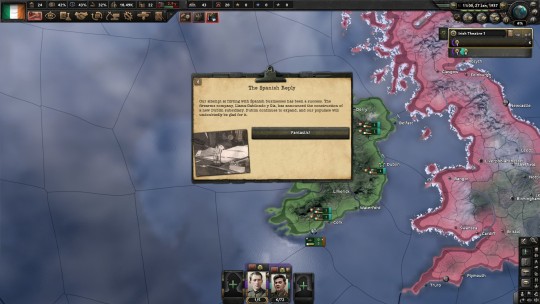
The Kingdom of Spain had also looked to establish an arms company in Ireland, eager to arm those who were also hostile to the syndicalists, and quite isolated on the European continent, with France and the German Protectorate of Morocco making an uneasy set of neighbors. Having a well-armed Irish Republic was a benefit to King Alfonso, who agreed to set up a subsidiary of Llama-Gabilondo y Cia SA, taking the name Dóiteáin-Gabilondo Incorporated, and selling their famous pistols to the Irish Republican Army. With regular army drills, and now a larger armaments industry within Ireland itself, a more significant and professional Irish Republican Army was starting to take shape.
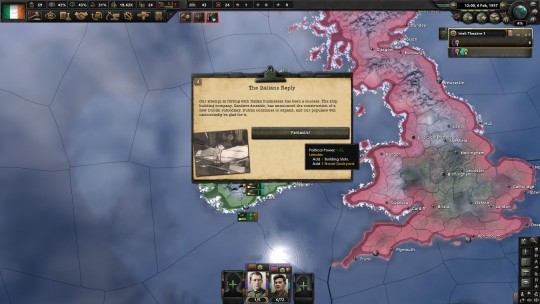
The Italian Republic, floundering in the wake of massive German and Austrian stock selloffs, were eager to find ways to bring in cash and stabilize their own economy. Seeing a pressing need, the Italian Republic opted to establish a naval manufacturing dockyard in Dublin as Gio Ansaldo Irish Sea Shipwright, Ltd, to help produce submarines for the Naval Service. Italian engineers could work in Ireland, the revenue would flow into Italy, and the Irish would receive a powerful deterrent against the Union of Britain’s navy. Working in the choppier northern waters was different from the warmer and calmer Mediterranean, but the Italians proved up to the challenge, christening the first Irish U-Boat the new Fenian Ram.
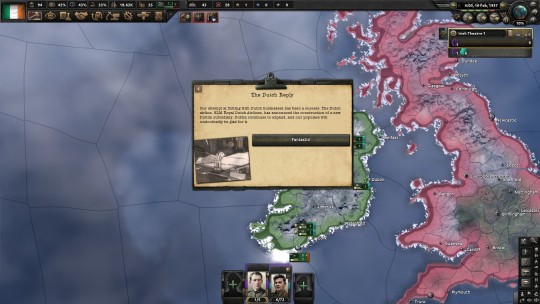
The rush of European activity to invest in Ireland had not gone unnoticed in the Netherlands. After a fierce and competitive bidding war, the Dutch government, very busy with their preparations for the upcoming elections in May, had given the go-ahead for Royal Dutch Airlines KLM to do business within Ireland. Rather than operating a strict subsidiary, as the government was still facing the worst of Black Monday, Royal Dutch instead opened a joint venture with Aer Lingus, operating a civilian airfield that would bring in much needed tax revenue, and providing expertise for the construction of a military airfield in Leinster. The Union of Britain had lodged a formal complaint against the move in the Netherlands, but the ambassador had been dismissed out of hand, the official response being “Ireland has a right to the sky, and Britain has no right to dictate policy to the Netherlands.”
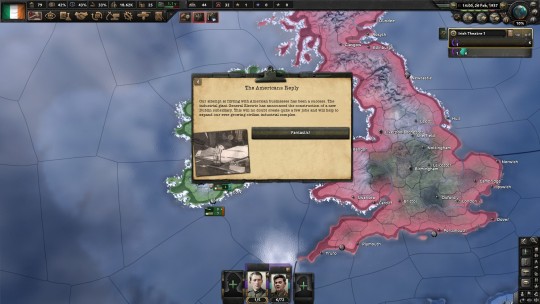
The United States had been considered highly unlikely to invest in Ireland. Even with the positive relationship that had existed between the two countries, the USA had been facing an existential crisis. To Collin’s great surprise, Garner had actually encouraged American companies to open subsidiaries in Ireland before hostilities broke out. In a diplomatic message to the Irish President, Garner had written: “I am certain there will be war. American industry will certainly not be spared. This initiative may save American lives and enrich both our countries. If the worst comes to pass, may God protect us both.” General Irish Electric, as the company titled itself, designed a logo incorporating the Irish harp in the signature “G” of the GE logo. The company received a grant from the National Industrial Investment Fund and purchased a factory abandoned during the Black Monday fallout, bringing up to speed in record time to produce civilian and industrial-grade electronics. Almost immediately, GIE had orders tasked almost to capacity for factories across Ireland to upgrade their own operations, throwing itself into the greater industrialization efforts that Michael Collins had championed the previous year.
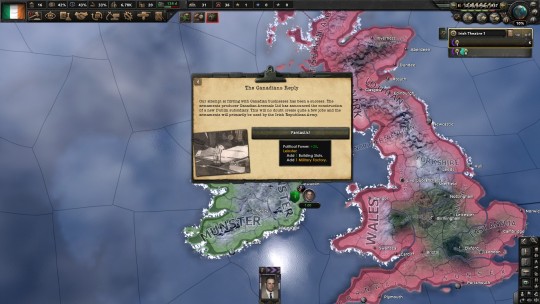
The Dominion of Canada was a much more difficult beast to wrangle. Edward VIII had made no secret that he wished to reacquire not just the British Home Isles, but the British Empire as well; he would not be a second-fiddle to the Kaiser. That would mean the Six Counties, surely, perhaps even re-establishing the Free State as a Dominion. Collins had debated even making the offer to Canada, but a good relationship with Canada was, putting Edward aside, a sound policy. Canada needed money to support their war efforts, and a friendly relationship with Ireland would mean less problems when launching their operation to take back the Home Islands. Collins privately feared that they would want to use Ireland as a staging ground. Ireland had situated itself as a prominent financial hub, and since Dublin was designated a Special Economic Zone, it could potentially be very lucrative and offer a way to sell to the rest of Mitteleuropa without dealing with the Kaiser. The Canadian government had assented to Canadian Arsenals, a crown corporation to open a subsidiary in Dublin named North Atlantic Arms. Collins made sure that it acted in all things as a private company, insisting that King Edward appoint an executive staff the same as any other business. That had been a headache in the Dail, with Eamon de Valera angrily demanding not to sell Irish land to King Edward. Collins had countered that Ireland was a free and independent republic, and that the King had to obey Irish law rather than dictating laws to Ireland.When rumors came around that Jim Larkin had supported Dev’s objections, the Fianna Fail politician withdrew his opposition in favor of a more moderate compromise, asking only that the Dail be presented the terms of the contract in open session so that they could vote on them. Dev’s desire not to give Larkin more ammunition had rapidly diminished opposition to the measure within Fianna Fail, and Sinn Fein offered only a token dissent, permitting the venture to go forward.
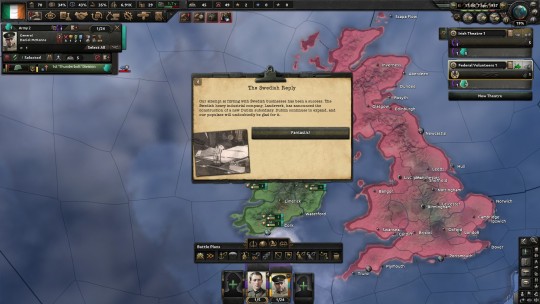
With the outbreak of war in the United States and Ireland’s rapid industrialization, Sweden had sensed an opportunity to open a subsidiary business in Ireland as well. AB Landsverk had originally sought to open a tank manufacturing plant, since the Irish tanks were largely outdated and the Irish Republican Army was going to need to modernize its arsenal. Fierce protest erupted from the social democrats within Sweden’s Parliament, opposing the idea of arming Ireland and facilitating a possible war between Ireland and the Union. The hawks within Sweden had supported the venture, but military arms, even support equipment, could not secure a large enough coalition for the Economic, Defense, and Foreign Ministers to agree to the venture. Not wanting to lose out on the potentially lucrative deal and already facing their own problems with syndicalist unrest, Sweden’s market liberals had offered a compromise within the Riksdag, allowing Landsverk to open Landsverk Inneal, specializing in tractors and harvesting equipment to support the modernization of the Irish agricultural sector. Several prominent military analysts noted that the new Inneal tractors, with a few modifications, looked suspiciously similar to a light tank with the turret removed, but these were dismissed as products of an overactive imagination by both Swedish and Irish military analysts.
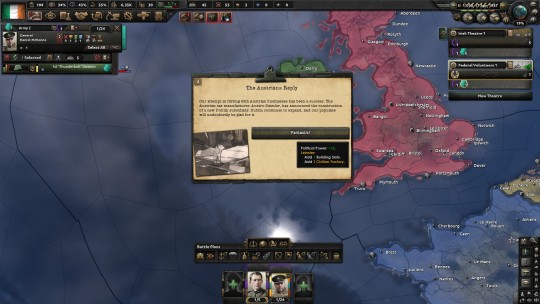
The Austrian Empire was in a difficult position in 1937. Emperor Karl I had been making significant plans for his Ausgleich Federation plans, and saw the Irish initiative not simply as a means to support his economy, but as a means to demonstrate both Austrian power and his willingness and initiative to support cooperation efforts for mutual gain. The Emperor had made his commitment to pluralism plain within his proposed federative model, he had hoped that participating in Collin’s economic initiative would help sway skeptics and naysayers to his side to give him greater support against Hungary. If it could help his economy and put neutral voters who cared more about their own personal livelihood than the greater plans of Austria-Hungary, that was fine as well. Daimler founded Irish-Daimler and focused on developing automobiles and lorries. While the Emperor could not be there in person, he had prepared a statement for the opening of the plant in Dublin. “Irish-Daimler is in the business of Irish business. Her success is our success, and our success is her success. May we both prosper in the days ahead.”
Eight nations had opted to do business with Ireland in such a short period of time, and there had already been murmurs for other nations to do likewise. The success of Irish Black Monday reforms had been the talk of the European financial sector. Even distant Japan had expressed an interest in perhaps opening a branch of one of their zaibatsus in Ireland to sell to Western markets, though such a discussion was in the planning stages. When interviewed by The Financial Times, Lemass had made the quote that had made the headlines. “Ireland is the Emerald Isle. She always sparkled in our hearts, now everyone can see it.”
When Michael Collins had heard that, he smiled. The man had the head of a businessman but the heart of a poet. The head and the heart needed to complement each other if he wanted to see Ireland through.
---
8 May 1937 - Áras an Uachtaráin, Dublin, Ireland
As the war passed into its third month, Collins started to wonder about the upcoming elections in the fall. America had been on his mind a lot lately. An emergency act by the Oirechtas called the Díodean initiative had allowed Americans seeking refuge to come to Ireland, and plenty had taken Collins up on his offer. Many immigrants came with much of their wealth with them, which had provided an influx of capital. Even more valuable, however, was the technical knowledge. Many of the immigrants had been factory managers or entrepreneurs, and they had knowledge which made them highly valuable in the industrial sector. Not every tale was so fortunate, however. Some culture shock was perhaps inevitable, but it had been incredibly slow going. Collins had remembered the first time he saw a new settler to Ireland drive on the wrong side of the road and cause a car accident. This felt like seeing that unfold in slow motion on a national scale. The poor Americans had felt the Irish were cheating them out of wages and exploiting their desperate circumstances, while the wealthy felt their standard of living drop precipitously.
The hAiséirghe crowd again troubled him. Reports of nativist gang uprisings in the poorer parts of cities and rural areas were on the rise. There were demonstrations that the new arrivals were stealing all of the good-paying jobs; this had been going on since the new immigration reform but now was reaching a fever pitch. The Unionists again rallied against Collins, accusing him of colonizing the north with people opposed to King Edward under the guise of humanitarian aid to defeat the Ulster Unionists at the ballot box. They demanded a series of refugee and work permits that did not confer voting rights as opposed to outright immigration and naturalization. That had caused a firestorm on the debate floor, causing no shortage of headaches for Collins.
To alleviate the shortages, Collins had organized refugee brigades in the Republican Army, where young men could earn a wage and provide a livelihood for their families. The Yanks were excellent shots, and Collins had hoped that seeing immigrants wearing a uniform would cause the locals’ respect for the military to undermine nativist tendencies. It was a mild success at best, mostly in Leinster where there had already been fewer problems overall. Collins had weighed outright banning the Ailtirí na hAiséirghe, but that would just send them underground like the Labour Party had. He had to settle for punishing assaults when they were reported, and increasing Gardaí patrols to keep the peace.
In the leadup to the elections, Collins had seen cracks start to form in his ironclad voting bloc. While syndicalism had little popularity in Ireland itself, Sinn Fein had seen an upsurge in popularity with Black Monday despite Collins’s efforts. The Irish Christian Front and the Ailtirí na hAiséirghe had campaigned against him thanks to his immigration policies. Fianna Fail had campaigned on greater liberalization, and the National Centre Party had wanted to re-orient foreign policy to a more pro-Entente position. Sinn Fein and Fianna Fail had opted to engage in tactical voting, with candidates withdrawing from ballot races in order not to split the vote. Jim Larkin had endorsed the move, promising to work with Sinn Fein to provide greater relief to the Irish working class. The Irish Christian Front opted to boycott the elections and both they and the Ailtirí na hAiséirghe accused Collins of bringing in foreign refugees to ensure he had the votes needed to win.

At a closed door meeting, Collins was asked a simple question. “Sir, what should we do about the election?”
Collins, his hands shaking, had only one response. “Whatever it takes.”
---
15 July 1937 - West Virginia, United States of America
“We’re in the right thick of it now, ain’t we?” Daniel McKenna shouted over the din of battle.
The East Coast Enclave had stabilized its borders after the early initial push, but still faced the difficulties of being surrounded by the enemy. Food and water shortages, irregular supply shipments, and losses from attrition were starting to take their toll on the beleaguered Federals. The Appalachian mountains had stymied Syndicalists pushing in from Ohio and Illinois, and the hilly and forested terrain had helped somewhat slow the push by Long’s forces, but only barely. Eisenhower had more success on the west, where the greater manpower has really started to pressure the American Union State on their Texas front.
The Federals still controlled the air though. That had made securing their defenses much easier. Flying over the Great Plains was effectively a death sentence, and few had the nerve to establish air cover on the east coast. That was a small comfort to Dan McKenna, who had gone to the Applachians in response to a new Syndie push. The Federals had retaken Charleston in June, but their position was tenuous there, and with new militia units being sent into battle, someone had needed to defend this key western outpost.
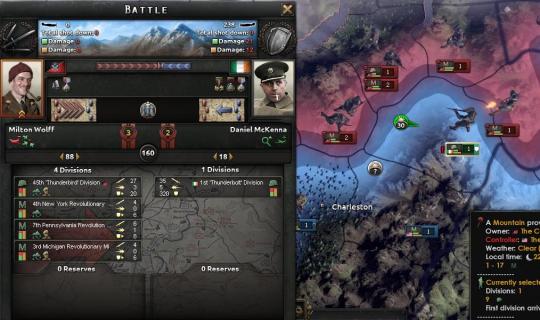
American militia units had stayed to defend the city, but McKenna had looked to secure the hills to the northeast. The Applachian plateau looked to give a good vantage point for artillery if any could succeed in the arduous task of towing them up to that position. Loyalist civilians had offered to do it on their own, pulling the units with their own work trucks, but that would be a dangerous undertaking without escort. McKenna took his Thunderbolts, with their own artillery pieces, to secure the hills first, while the militia guns could follow second when the way had been cleared. The Syndicates, tipped off by sympathetic informants, launched a massive push with their own 45th Thunderbirds, supplemented by local revolutionary forces, to prevent bombardment. The battle plan called for an overwhelming attack to break the dug-in mountain entrenchments, attacking from multiple directions in an attempt to dislodge the stubborn Irish defenders and find a weak spot.
McKenna demanded that the forces hold, using high-explosive burst shells over the heads of the enemy to maximize effect on the enemy. The engineers had dug in extensively, and had used dynamite to blast further fortifications and built entrenchments. The Thunderbolts only had a few guns, which were primarily pointed toward the northwest against the more highly-trained Thunderbirds. At such high elevation, and with such difficult terrain, evacuating casualties was difficult on the mountain, and men sometimes collapsed where they stood due to a combination of fatigue and high elevation.
That had been days ago, and the Thunderbolts were in tatters. The less wounded had even taken up shifts at night, or taking over service positions so able-bodied men could shoot and spot for the artillery. They had been holding, but just barely so. If it hadn’t been a mountain, they would have already been overrun. “I’ll be damned if I die on some cold rock half the world away from home.” McKenna defiantly continued to stand, hoping to wear down the superior numbers with artillery shells. He was the Wall of West Virginia, and he wouldn’t let the bastards through.
---
10 September 1937 - Pittsburgh, Pennsylvania
It had been months of hard fighting. Charleston had remained in Federal hands, and the front had stabilized, but all hopes of recovering the Federals in Kentucky were lost. The loyalists could only hope that the army groups had disbanded to make their way back to Federal territory in smaller numbers rather than being shot en masse, or worse, deserting to fall in with the enemy for their own salvation.
MacArthur had relied on the volunteers to fight a great deal of battles, more than he had preferred. The states under his control were tapped out for manpower resources, and if he started poaching from the factory floors for more able bodies he’d run out of supplies. Supply was irregular, especially for fuel, which he needed to keep the planes in the sky and the troops moving across the front. Olds and Tunner were able to airlift a lot of supplies, but demand always outstripped supply, and the more supplies he lifted the more danger there was for explosions in the cargo holds.
Ultimately, MacArthur decided that he needed to attack, to keep the pressure on the east so that the Syndicalists did not pull more men to prevent Eisenhower from marching toward Chicago from Kansas and the Dakotas. The Syndicates had been attacking south against the American Union State and fortifying out of New York City, and MacArthur had theorized that they would be weak in between those two strongpoints. The Brazilian and Argentine volunteers offered to push toward Philadelphia, with the hopes of breaking the regional command post and sending Syndicalist forces into disarray, while the Irish opted to push into Pittsburgh to seize the valuable steel mills and threaten a push into Ohio. The Mexican volunteers opted to remain in Virginia to help guard the line against the Longists; they had feared if the American Union State won, there may have been calls to expand further south to seize valuable oil and mining territories; fears of the Golden Circle expansion as it was dubbed in Mexico had been a hot button issue for the Mexican volunteers. If the Irish could secure Pittsburgh, that would give them control of the railroad junctions and the rivers, and allow MacArthur to bring in militia units to bring the territory under control with little fighting. With that, they could push further north toward Erie, splitting the Syndicalists and isolating them in New York. With Canada closing the border to the Combined Syndicates, even to the point of having the Royal Canadian Mounted Police arrest suspected border crossers and turning them over to the Federal government in Denver, that would render a similar fate to the lost Federals in Kentucky. MacArthur just hoped that his south could hold against the Firsters. Trading Virginia for Pennsylvania was not a winning proposition.
The B&O Line had been cut early, forcing McKenna and the Thunderbolts to march for most of the trip. Even in September, Pennsylvania was still hot, to help with water and the unfamiliar terrain McKenna had largely followed the Mononghaela river. To the east, he had Federal troops supplemented by Maryland militia moving north to take Harrisburg. McKenna force-marched his troops into Syndicate territory, hoping to secure a clear pathway along the rail lines for American repair crews to fix the B&O.
McKenna had been fortunate, western Pennsylvania had been defended by irregular militia units, poorly armed and lacking artillery support. In many cases, McKenna found that they didn’t have enough rifles for every man and only a few machine guns, some had taken to using shotguns better suited for partridge than men. When he was lucky, a few barrages from the field guns was enough to send them packing, but even without that, a dedicated attack usually was able to force back the disorganized units. A pity he didn’t have tanks, even a couple of old Weltkrieg landships would simply be able to drive to Pittsburgh unimpeded as long as it was gassed up.
The locals were fiercely divided. A few times McKenna had gone near towns, he had been welcomed and told where the Syndicates had kept their ammunition depot. Most of the time, however, the homes were ransacked, the supplies taken. Horror stories came to McKenna about “war syndicalism,” Reed’s name for the efforts taken to ensure his fighting men had the food they needed to fight. Sometimes it was the Combined Syndicates directly, but more often it seemed to be neighbors seizing on old grudges, summarily beating those they suspected of disloyalty and stealing their possessions, donating them to Reed as an act of solidarity. Worse still was what happened to those suspected of disloyalty. The Combined Syndicates offered a bounty on saboteurs and informants, and that had led to hastily-convened People’s Courts, serviced by hanging judges. Even so, there were plenty of people loyal to the Combined Syndicates, shouting their approval at finally destroying the brutal oppressors of Wall Street and their puppets in the Federal government. For a moment, McKenna thought of Ulster, and remembered everything he had heard 15 years before, and then he remembered the refugees from the British Isles after their revolution.
Pittsburgh had been hastily-fortified, with burned out hulks of cars blocking the bridges into town, forcing McKenna to navigate the crude fortifications with great care. The civilian population had largely huddled in buildings with boarded-up windows. The large buildings had been long ago hit by artillery fire or bombings from aircraft. Rail tunnels had been places of safety, McKenna’s scouts had found a few brave souls trading for various materials on picnic blankets. The mayor, who had thrown in his lot with the Syndicalists, had fled the city with the rest of the CSA, and they had thrown those city councilmen loyal to the Federal government into the Ohio. Coordination was largely infrequent, done by amateur radio. The civilians largely wanted to be left alone, out of the civil war, but the war had come to them despite their best wishes.
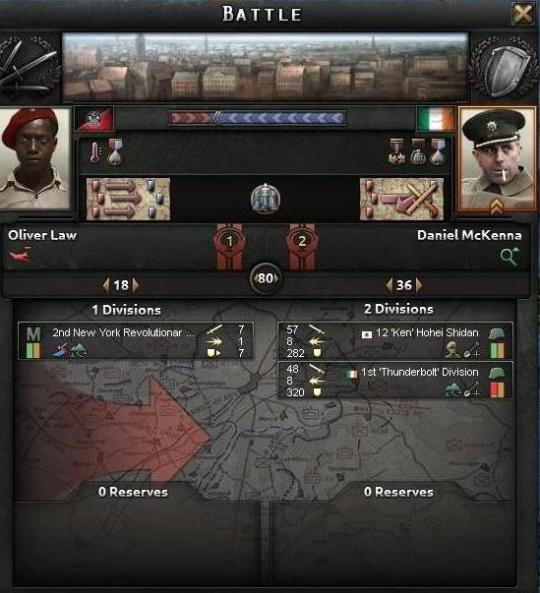
McKenna set to work, ordering his engineering corps to get the guns into firing positions. He positioned men near the Alleghany to prevent any CSA attack using the river to bypass his fortifications, and fortified the major exits with sandbags and machine guns. He had barely gone through half of his fortifications when he had heard the bad news: The Syndies were on the march along the Alleghany, and they would attack the city soon.
Yet, McKenna was not alone. The 12th Hohei Shidan, volunteer forces from far-off Japan, had come to support the Irish forces, and they had brought with them their Type 90’s, doubling McKenna’s supply of artillery. The Japanese and Irish soldiers met on the south side, and drew up plans for an attack. McKenna was given overall command, and elected to put his Irish veterans in the more dangerous forward position while the Japanese would fire on the CSA to draw them in under a battery of withering artillery fire. Once the enemy had descended past Lower Lincoln and could no longer enjoy visibility from Upper Lincoln, the Irish would ambush them in close quarters.

The CSA announced their attack with a radio command ordering all civilians to remain indoors, and all “foreign invaders” to surrender to the 2nd New York Revolutionary Guard, for handling by the legitimate United States government for repatriation. The 12th Hohei Shidan responded with a cannon barrage, thus commencing the Battle of Pittsburgh at 0900 on 10 September. McKenna’s Thunderbolts fought in ambush-and-retreat tactics, dividing themselves into seven-man fireteams. McKenna would fire on advancing CSA forces, retreat into a building, then have a second fireteam flank the New York Revolutionaries from across the street. Casualties were high on both sides, especially among the Irish who often refused to fight until in incredibly close combat, hoping the shock of the ambush would carry the day. Friendly fire incidents were high, especially as the day went into night, both from accidental fire on friendly troops and sympathetic civilians accidentally firing on who they believed were enemy soldiers. Yet the day stood. On 14 September, his squads battered and American troops pushing through central Pennsylvania, Oliver Law reluctantly ordered a retreat to the northeast. Western Pennsylvania stood liberated, but the war was not over yet.
---
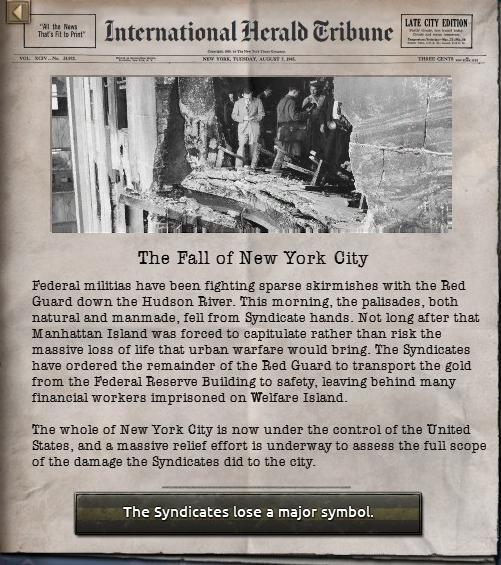
20 December 1937 - Welfare Island, New York City, United States of America
The icy winds of winter were howling, but the pit in Daniel McKenna’s stomach wasn’t from the cold. He had hoped to warm himself with a cigarette as he surveyed the successful conquest of New York City, but that had all left him. Naught but a short time ago, the celebration had been high. The Syndies had lost both a major symbol and, perhaps more pragmatically, their eastern command center. The Dominion of Canada had officially supported the Federal Government, and there had been Canadian, Indian, and French Republican volunteers sailing to Maryland to join MacArthur and the Volunteer Brigades, along with massive shipments of weapons from the Entente. Manhattan had surrendered rather than risk a massive urban brawl amongst the skyscrapers. That too, had seemed like a cause for celebration, but there was little sense of Christmas cheer among those who were picking through the ruins of New York City, for they had finally come to Welfare Island.
Inside, McKenna had found cell after cell of prisoners, skin stretched and hair falling out from starvation and malnutrition, their bodies broken from months of hard labor. When New York had fallen to the Syndicalists, they had imprisoned anyone who had worked in the financial sector, any who rented an apartment to another, or any who they considered to be bourgeoise, and demanded that they atone for the crimes of their previous lives with new, honest labor for the Syndicalist cause. They had been forced into the most dangerous jobs of the arms industry, like manufacturing artillery shells to the point where their skin had turned to a greasy yellow. Bleeding gums and fingers, limbs lost in machinery or explosive accidents were routine, each prisoner was a laundry list of atrocities written out upon their bodies.
Each horror that McKenna heard made him feel numb. He had nearly torn his gloves in two after listening, but he had made sure that he had heard it all, and that his staff heard it as well. A patriotic young woman, formerly a social columnist for the New York Tribune who had signed on to help with the support staff, volunteered to transcribe every word. “Be damned, lass, you’re a damn sight braver than any fella. Write it down, every bloody word, and know that ye’ve got a ironclad heart three times larger than any bastard who tells ye different.”
McKenna had dispatched three messages from New York. The first was to General MacArthur, who had said: “Am pleased to deliver to you New York as an early Christmas present.” The second was to Michael Collins, relaying a request for more reinforcement of men and materiel. The third, a private correspondence, bemoaned what he had seen. “The brutality of what I’ve seen is beyond words, and the only thing that breaks me more is the thought that this is not some singularly unique moment of malice, that we’ll find another Welfare Island in the South run by those America First bastards. God help me, is this what we left the English to in ‘25? Did we look at an Englishman for all those years and see the English and not the man?”
“Private. Bring all the Syndie prisoners we’ve got, make them see what went on here, make ‘em stare at each one. If they look away, hit ‘em. Then find the officers, and see which ones knew about it. And if ye find one that did...hang ‘em from the Brooklyn Bridge.”
---
Alright, that’s the second chapter, with the Syndicates on the ropes and the Firsters being slowly ground down in the western theater. The third chapter will handle the defeat of the Syndicalists and the Firsters and Mosley’s opening shots for his invasion of Ireland. Let me know what you think. And yes, I know some of the pictures are from 0.12, I’ve already mentioned that in my first post on the topic, and I know the battle map is crude; I suck at art. Also, what do you think about cropping the screenshots to make them easier to read? I think it looks fine, not too pixelated or zoomed in, but it does lose the sort of authentic “AAR screenshot” feeling. Which do you prefer, readers?
Images
Cactus Jack Becomes President
Standoff in America
Second American Civil War Begins
Battle of Baltimore
Encircled Federal Troops in Kentucky
US Moves the Capital to Denver
Germany Approves the Irish Business Initiative
Spain Approves the Irish Business Initiative
Italy Approves the Irish Business Initiative
The Netherlands Approves the Irish Business Initiative
The United States Approves the Irish Business Initiative
Canada Approves the Irish Business Initiative
Sweden Approves the Irish Business Initiative
Austria Approves the Irish Business Initiative
Rigged 1937 Election
The Wall of West Virigina
The Battle of Pittsburgh
Pittsburgh Battle Map
The Fall of New York
-SLAL
22 notes
·
View notes
Text
It Seems Like Nothing Changes
By Paul Cussen
October 1919
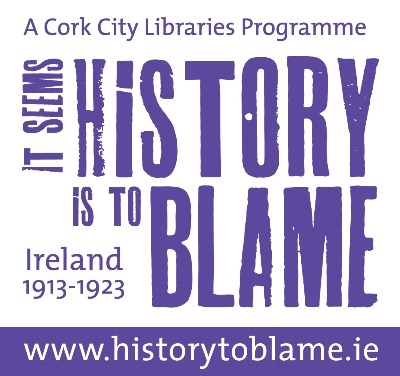
While Lloyd George’s government realise that Home Rule is not enough to satisfy the Irish, the Irish Committee of the British Government is recreated under heavy Unionist influence, notably through Sir Walter Long.
John McArdle, F Company, 1st Battalion, Dublin Brigade, Irish Volunteers loses the use of an eye during an exchange with British forces.
James Joyce leaves Zurich for Trieste. He writes to Harriet Weaver to say that he has found the manuscript of A Portrait… in the drawer of his desk, exactly where he had left it four years before. Not trusting the post-war postal system he divides the manuscript into four parts, posting each one separately, and promising that if any part did not arrive, he will write it out again for her.

(In July 1951 Harriet Weaver presented the manuscript to Frederick Boland as a donation for the National Library of Ireland. She was so impressed by Boland’s enthusiasm that she donated a portrait of the great man by Wyndham Lewis to the National Gallery of Ireland)
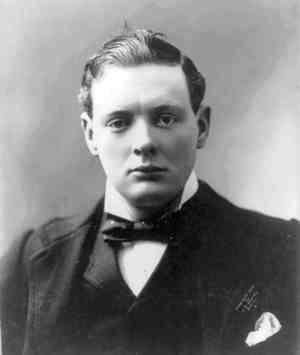
Winston Churchill condemns the IRA as ‘a gang of squalid murderers’ who have eluded capture.
D’Annunzio, the ‘John the Baptist of Fascism’, receives a cargo ship laden with military equipment. The Persia is captured by Giuseppe Giuletti and some volunteers who redirect it from its original destination of Vladivostock, where it is to supply the White Armies, to Fiume.
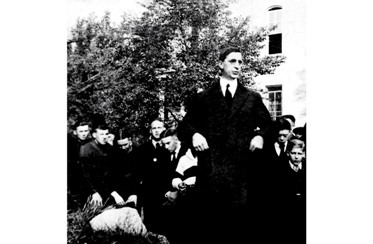
1-2 October
Dozens of doughboys shot at African-Americans and when police arrive they shoot at them during the Baltimore riot. Police reinforcements cause the soldiers to withdraw. In total six soldiers are arrested.
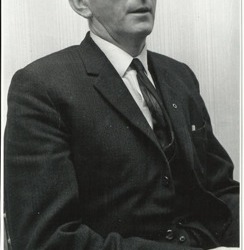
2 October
Seán 'ac Dhonncha is born in Carna, Connemara (d. 1996)
US President Woodrow Wilson has a stroke that leaves him partially paralysed.
3 October
John Boyd (Boyd Bradfield Upchurch) is born in Atlanta (d. 2013)
James M. Buchanan is born in Murfreesboro, Tennessee (d. 2013)

5 October
Private William Grenville dies of appendicitis in Cork.
Donald Pleasence is born in Worksop, Nottinghamshire (d. 1995)
5-6 October
61.6% of voters vote for prohibition (of spirits) in a referendum in Norway.

6-7 October
American marines and Haitian gendarmes repel an attack by Caco rebels under Charlemagne Masséna Péralte in the Battle of Port-au-Prince.
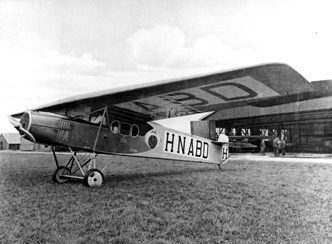
7 October
Koninklijke Luchtvaart Maatschappij N.V. (KLM) is founded and will become the first airline in the world to celebrate its centenary. The modified De Havilland DH-9B bomber pictured above was part of their London Amsterdam service with British Aerial Transport.
9 October
Constable Joseph Reynolds of the Dublin Metropolitan Police overpowers William Little who had just shot two “Asylum attendants and a private enquiry agent”.

10 October
Private W.J. Edwards dies of aenemia in Central Hospital, Cork aged 18.
11 October
Art Blakey is born in Pittsburgh, Pennsylvania (d. 1990)
11 Oct–18 Nov
Soviet forces halt the White forces advance on Moscow in the Orel-Kromy operation.
14 October
Aleksandar Stamboliyski is appointed Prime Minister of Bulgaria.

17 October
HMS Dragon is hit by two shells from a shore battery while taking part in an operation against German forces attacking Riga. Nine of the crew die and five are wounded.
RCA is created as a subsidiary to General Electric.

18 October
De Valera is made an honorary chief of the Chippewa in Wisconsin.
Pierre Trudeau is born in Montreal (d. 2000)
19 October
Detective Michael Downing of G Division (Dublin Metropolitan Police) is assassinated.
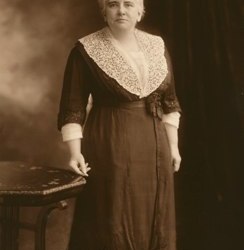
Anna Howard Shaw becomes the first female recipient of the US Distinguished Service Medal.
20 October
Ontario voters decide not to repeal prohibition in a referendum.
The man engine which transports miners underground at the Levant Mine in Cornwall fails. The rod which controls the movement breaks and men on the device plummet the 1,596-foot shaft. At least five of the 31 who die had served in the War.
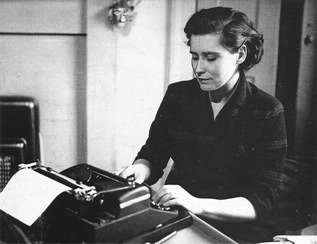
22 October
Doris Lessing is born in Kermanshah, Iran (d. 2013)
W. N. P. Barbellion (pen-name of Bruce Frederick Cummings), English naturalist and diarist, dies of multiple sclerosis (born 1889)
25 October
Jimmy Rudd is born in Dublin (d. 1985)
Six Republican prisoners (including Piaras Beaslaí) escape from Strangeways Prison.
Ireland and England draw 1-1 in front of a crowd of 30,000 in Windsor Park, Belfast.
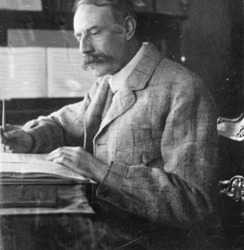
26 October
Edward Elgar’s Cello Concerto in E minor, Op. 85 premieres in Queen’s Hall, London.
President Wilson’s veto of the Prohibition Enforcement Bill is overridden.
27 October
James Joseph Magennis is born in Belfast (d. 1986)
Minister for Foreign Affairs, Count George Plunkett, reports ‘a steady progress’ in the development of Ireland’s foreign relations ‘in spite of all impediments’.
Mike Pepitone becomes the last victim of the Axeman of New Orleans.
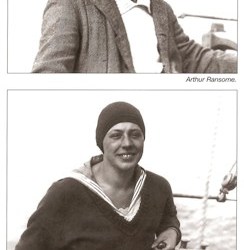
28 October
Arthur Ransome leaves Russia with his future wife Evgenia Petrovna Shelepina, who had been Trotsky's secretary.
30 October
Ella Wheeler Wilcox dies of cancer in Short Beach, Connecticut (b. 1850)
Laugh, and the world laughs with you;
Weep, and you weep alone.
For the sad old earth must borrow its mirth
But has trouble enough of its own
‘Since I went to Ireland the only party delivering inflammatory speeches inciting to the murder of the servants of the Crown has been the Sinn Fein party, and so long as these speeches are likely to be delivered by these men I will prohibit them.’
-Sir James Macpherson in the House of Commons
31 October
Two units of the IRA attack the RIC barracks in Ballivor, Co. Meath killing 35 year old RIC Constable William Agar and seizing a revolver, five rifles and a large amount of ammunition.
Elsewhere in Co. Meath, Sergeant Matthews and Constables Griffiths and O’Shea at Lismullin RIC barracks repel an attack by about 26 Volunteers.
3 notes
·
View notes
Text
#OTD in 1920 – Cork IRA volunteer, Michael Fitzgerald, dies following a sixty-seven day hunger strike.
Michael Fitzgerald also known as Mick Fitzgerald, was among the first members of the Irish Republican Army and played an important role in organising it. He rose to the rank of Commandant OC in the 1st Battalion, Cork No.2 Brigade. He died in the 1920 hunger strike at Cork Gaol. His death is credited with bringing world-wide attention to the Irish cause for independence.
Born in Ballyoran,…

View On WordPress
#Ballyoran#Co. Cork#Commandant OC in the 1st Battalion#Cork Gaol#Cork No. 2 Brigade#Fermoy#Hunger Strike#IRA#Ireland#Irish History#Irish Republican Army#Irish War of Independence#Kilcrumper Cemetery#Liam Lynch#Michael Fitzgerald#Mick#Togher
8 notes
·
View notes
Text
#OTD in 1920 – Cork IRA volunteer, Michael Fitzgerald, dies following a sixty-seven day hunger strike.
#OTD in 1920 – Cork IRA volunteer, Michael Fitzgerald, dies following a sixty-seven day hunger strike.
Michael Fitzgerald also known as Mick Fitzgerald, was among the first members of the Irish Republican Army and played an important role in organising it. He rose to the rank of Commandant OC in the 1st Battalion, Cork No.2 Brigade. He died in the 1920 hunger strike at Cork Gaol. His death is credited with bringing world-wide attention to the Irish cause for independence.
Born in Ballyoran,…
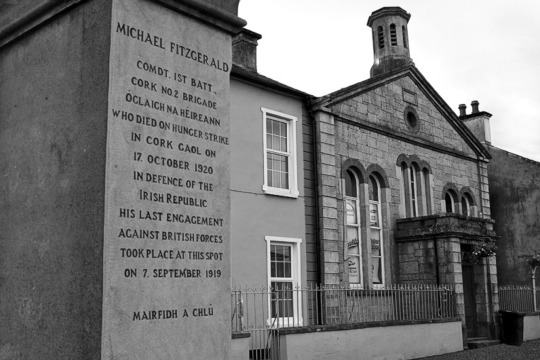
View On WordPress
#Ballyoran#Co. Cork#Commandant OC in the 1st Battalion#Cork Gaol#Cork No. 2 Brigade#Fermoy#Hunger Strike#IRA#Ireland#Irish History#Irish Republican Army#Irish War of Independence#Kilcrumper Cemetery#Liam Lynch#Michael Fitzgerald#Mick#Togher
11 notes
·
View notes
Text
#OTD in 1921 – The Clonmult Ambush | Twelve IRA volunteers were killed in Clonmult, near Midleton, Co Cork by British soldiers and Auxiliaries.
#OTD in 1921 – The Clonmult Ambush | Twelve IRA volunteers were killed in Clonmult, near Midleton, Co Cork by British soldiers and Auxiliaries.
Irish Republican Army volunteers occupying a farmhouse in Clonmult, Co Cork were surrounded by a force of British Army, Royal Irish Constabulary and Auxiliaries. In the action that followed, twelve IRA volunteers were killed, four wounded and four captured. A total of 22 people died in the ambush and subsequent executions – 14 IRA members, 2 Black and Tans and 6 suspected informers.
The 4th…

View On WordPress
#4th battalion#Auxiliaries#Black and Tans#British soldiers#Clonmult Ambush#Co. Cork#Crown Forces#Diarmuid O&039;Hurley#History of Ireland#IRA First Cork Brigade#Ireland#Irish History#Irish War of Independence#Maurice Moore#Midleton#Paddy O&039;Sullivan#RIC
8 notes
·
View notes
Text
#OTD in 1921 – The Clonmult Ambush | Twelve IRA volunteers were killed in Clonmult, near Midleton, Co Cork by British soldiers and Auxiliaries.
#OTD in 1921 – The Clonmult Ambush | Twelve IRA volunteers were killed in Clonmult, near Midleton, Co Cork by British soldiers and Auxiliaries.
Irish Republican Army volunteers occupying a farmhouse in Clonmult, Co Cork were surrounded by a force of British Army, Royal Irish Constabulary and Auxiliaries. In the action that followed, twelve IRA volunteers were killed, four wounded and four captured. A total of 22 people died in the ambush and subsequent executions – 14 IRA members, 2 Black and Tans and 6 suspected informers.
The 4th…
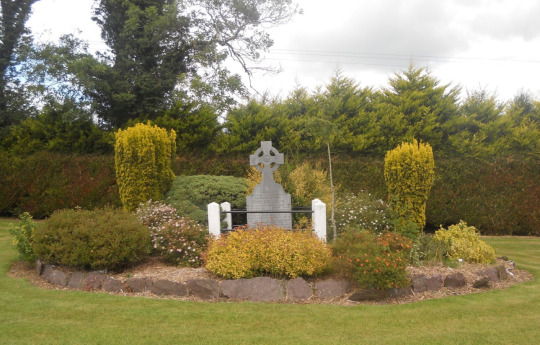
View On WordPress
#4th battalion#Auxiliaries#Black and Tans#British soldiers#Clonmult Ambush#Co. Cork#Crown Forces#Diarmuid O&039;Hurley#History of Ireland#IRA First Cork Brigade#Ireland#Irish History#Irish War of Independence#Maurice Moore#Midleton#Paddy O&039;Sullivan#RIC
3 notes
·
View notes
Text
#OTD in 1921 – The Clonmult Ambush | Twelve IRA volunteers were killed in Clonmult, near Midleton, Co Cork by British soldiers and Auxiliaries.
#OTD in 1921 – The Clonmult Ambush | Twelve IRA volunteers were killed in Clonmult, near Midleton, Co Cork by British soldiers and Auxiliaries.

Irish Republican Army volunteers occupying a farmhouse in Clonmult, Co Cork were surrounded by a force of British Army, Royal Irish Constabulary and Auxiliaries. In the action that followed, twelve IRA volunteers were killed, four wounded and four captured. A total of 22 people died in the ambush and subsequent executions – 14 IRA members, 2 Black and Tans and 6 suspected informers.
The 4th…
View On WordPress
#4th battalion#Auxiliaries#Black and Tans#British soldiers#Clonmult Ambush#Co. Cork#Crown Forces#Diarmuid O&039;Hurley#History of Ireland#IRA First Cork Brigade#Ireland#Irish History#Irish War of Independence#Maurice Moore#Midleton#Paddy O&039;Sullivan#RIC
6 notes
·
View notes
Text
#OTD in 1921 – The Clonmult Ambush: Twelve IRA volunteers were killed in Clonmult, near Midleton, Co Cork by British soldiers and Auxiliaries.
#OTD in 1921 – The Clonmult Ambush: Twelve IRA volunteers were killed in Clonmult, near Midleton, Co Cork by British soldiers and Auxiliaries.
Irish Republican Army volunteers occupying a farmhouse in Clonmult, Co Cork were surrounded by a force of British Army, Royal Irish Constabulary and Auxiliaries. In the action that followed, twelve IRA volunteers were killed, four wounded and four captured. A total of 22 people died in the ambush and subsequent executions – 14 IRA members, 2 Black and Tans and 6 suspected informers.
The 4th…
View On WordPress
#4th battalion#Auxiliaries#Black and Tans#British soldiers#Clonmult Ambush#Co. Cork#Crown Forces#Diarmuid O&039;Hurley#History of Ireland#IRA First Cork Brigade#Ireland#Irish History#Irish War of Independence#Maurice Moore#Midleton#Paddy O&039;Sullivan#RIC
3 notes
·
View notes
Text
1921 – The Clonmult Ambush: Twelve IRA volunteers were killed in Clonmult, near Midleton, Co Cork by British soldiers and Auxiliaries after being surrounded in a house.
1921 – The Clonmult Ambush: Twelve IRA volunteers were killed in Clonmult, near Midleton, Co Cork by British soldiers and Auxiliaries after being surrounded in a house.
Irish Republican Army volunteers occupying a farmhouse in Clonmult, Co Cork were surrounded by a force of British Army, Royal Irish Constabulary and Auxiliaries. In the action that followed, twelve IRA volunteers were killed, four wounded and four captured. A total of 22 people died in the ambush and subsequent executions – 14 IRA members, 2 Black and Tans and 6 suspected informers.
The 4th…
View On WordPress
#4th battalion#Auxiliaries#Black and Tans#British soldiers#Clonmult Ambush#Co. Cork#Crown Forces#Diarmuid O&039;Hurley#History of Ireland#IRA First Cork Brigade#Ireland#Irish History#Irish War of Independence#Maurice Moore#Midleton#Paddy O&039;Sullivan#RIC
2 notes
·
View notes
Text
#OTD in 1920 – Cork IRA volunteer, Michael Fitzgerald, dies following a sixty-seven day hunger strike.
#OTD in 1920 – Cork IRA volunteer, Michael Fitzgerald, dies following a sixty-seven day hunger strike.
Michael Fitzgerald also known as Mick Fitzgerald, was among the first members of the Irish Republican Army and played an important role in organising it. He rose to the rank of Commandant OC in the 1st Battalion, Cork No.2 Brigade. He died in the 1920 hunger strike at Cork Gaol. His death is credited with bringing world-wide attention to the Irish cause for independence.
Born in Ballyoran,…

View On WordPress
#Ballyoran#Co. Cork#Commandant OC in the 1st Battalion#Cork Gaol#Cork No. 2 Brigade#Fermoy#Hunger Strike#IRA#Ireland#Irish History#Irish Republican Army#Irish War of Independence#Kilcrumper Cemetery#Liam Lynch#Michael Fitzgerald#Mick#Togher
10 notes
·
View notes
Text
#OTD in 1920 – Cork IRA volunteer, Michael Fitzgerald, dies following a sixty-seven day hunger strike.
#OTD in 1920 – Cork IRA volunteer, Michael Fitzgerald, dies following a sixty-seven day hunger strike.

Michael Fitzgerald also known as Mick Fitzgerald, was among the first members of the Irish Republican Army and played an important role in organising it. He rose to the rank of Commandant OC in the 1st Battalion, Cork No.2 Brigade. He died in the 1920 hunger strike at Cork Gaol. His death is credited with bringing world-wide attention to the Irish cause for independence.
Born in Ballyoran,…
View On WordPress
#Ballyoran#Co. Cork#Commandant OC in the 1st Battalion#Cork Gaol#Cork No. 2 Brigade#Fermoy#Hunger Strike#IRA#Ireland#Irish History#Irish Republican Army#Irish War of Independence#Kilcrumper Cemetery#Liam Lynch#Michael Fitzgerald#Mick#Togher
8 notes
·
View notes
Text
#OTD in 1921 – The Clonmult Ambush: Twelve IRA volunteers were killed in Clonmult, near Midleton, Co Cork by British soldiers and Auxiliaries after being surrounded in a house.
#OTD in 1921 – The Clonmult Ambush: Twelve IRA volunteers were killed in Clonmult, near Midleton, Co Cork by British soldiers and Auxiliaries after being surrounded in a house.
Irish Republican Army volunteers occupying a farmhouse in Clonmult, Co Cork were surrounded by a force of British Army, Royal Irish Constabulary and Auxiliaries. In the action that followed, twelve IRA volunteers were killed, four wounded and four captured. A total of 22 people died in the ambush and subsequent executions – 14 IRA members, 2 Black and Tans and 6 suspected informers. The 4th…
View On WordPress
#4th battalion#Auxiliaries#Black and Tans#British soldiers#Clonmult Ambush#Co. Cork#Crown Forces#Diarmuid O&039;Hurley#History of Ireland#IRA First Cork Brigade#Ireland#Irish History#Irish War of Independence#Maurice Moore#Midleton#Paddy O&039;Sullivan#RIC
0 notes
Text
It Seems Like Nothing Changes
Paul Cussen
June 1919

In June 1919 the Cork Furniture Store, which had moved from Merchant Street to a new premises on Winthrop Street, took over London House on Saint Patrick’s Street and expanded to sell ladies clothes. The firm was owned by William Roche from Killavullen.

The Ford building on the marina covered a floor area of 330,000 square feet, just over 7.5 acres. The company employed 1,800 workers. John O’Neill, who joined Ford in 1919 and later became Managing Director of the plant (in 1932), described the plant as being ‘ahead of anything else in Europe’ in terms of layout and equipment.
In late June the lease on the Cork National Shell Factory was taken over from the Corporation of Cork by Richard Woodhead, acting on behalf of the Ford Company. In the 1930s it was leased to the Lee Motor Company.
Cork hurlers changed from blue jerseys with a large saffron C across the chest after British forces raided the County Board offices in Cook Street and confiscate their kits.

In June 1919 Michael Collins was made president of the IRB (Irish Republician Brotherhood).
Terence MacSwiney led an abortive raid to gain arms and ammunition at the Killeagh air ship base, a facility of the Royal Naval Air Service.
The 2nd Battalion of the Royal Munster Fusiliers remained in France until June 1919 when they returned to England.
From January to June 198 British soldiers in Ireland died: 118 from influenza/pneumonia, 55 died from other natural causes, 6 died from firearms accidents, 15 from accidents not involving firearms and 4 from suicide.
Martin Doyle, originally from New Ross in Wexford, received his Victoria Cross from King George V at Buckingham Palace. In October 1920 he joined the IRA in East Clare acting as an intelligence officer.
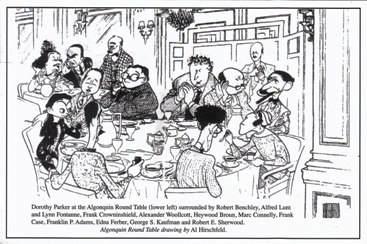
"The Vicious Circle" gathered at the Algonquin for the first time as the result of a practical joke carried out by theatrical press agent John Peter Toohey. It is only later, with their numbers growing, that they move to the now famous round table.

1 June
de Valera embarks on his tour of the USA with three aims:
· to ask for official recognition of the Irish Republic,
· to obtain a loan to finance the work of the new government, and
· to secure the support of the American people for the republic
2 June
New York City night watchman William Boehner is the only fatality as eight bombs detonate in eight cities across America. Each of the bombs is delivered with several copies of a pink flyer, titled "Plain Words", that read:
War, Class war, and you were the first to wage it under the cover of the powerful institutions you call order, in the darkness of your laws. There will have to be bloodshed; we will not dodge; there will have to be murder: we will kill, because it is necessary; there will have to be destruction; we will destroy to rid the world of your tyrannical institutions.
The bombings are carried out by Italian anarchist followers of Luigi Galleani.

3 June
Private Peter Asher dies of pneumonia at the military hospital in Buttevant.
Today’s Manchester Guardian review of Chekov’s The Seagull says:
“The Seagull” is a low-spirited play, and the sharpness of tragedy in it is blunted by Tchekov’s (sic) satire and irrelevances of other kinds. Tchekov, as we know from his stories, is a genial soul, and one missed somehow the feeling of sincerity in the climax to-day.
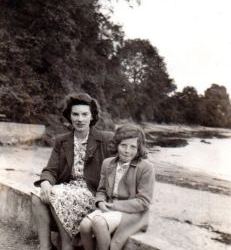
6 June
June Huband (who used the nom de plume Helen Forrester) is born in Hoylake on Merseyside (d.2011)
The United States Senate pass a resolution asking for the delegation appointed by Dáil Éireann to be given a hearing at the Paris Peace Conference, and expressing sympathy with the “aspirations of the Irish people for a government of their own choice”.
5-7 June
600-700 Armenian civilians are murdered by armed ethnic Azeri and Kurdish irregulars and Azerbaijani soldiers in the Khaibalikend massacre.

7 June
The Sette Giugno riots occur in Malta, as a crowd of thousands are shot at by British soldiers. Four die and over 50 are wounded in protests challenging the British presence on the island.
8 June
Constantine Fitzgibbon is born in The United States (d. 1983)
Coslett Herbert Waddell dies (b. 1858)
9 June
The City of Winnipeg Police Commission dismiss almost the entire city police force for refusing to sign a pledge promising to neither belong to a union nor participate in a sympathetic strike.
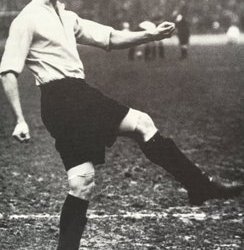
10 June
Kevin O’Flanagan is born in Dublin (d. 2006)
14 June
Walter Weedon Grossmith dies in London (b. 1854)

15 June
At 8.40 am after flying for 16 hours and 28 minutes and covering 1,900 miles without stopping, John Alcock and Arthur Brown mistook Derrigimlagh bog for a landing strip and landed their plane completing the first transatlantic flight.
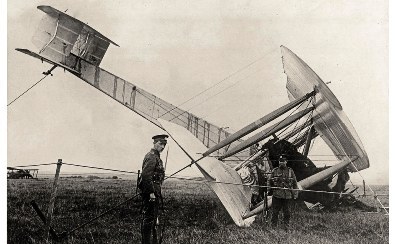
“I’m Alcock – just come from Newfoundland”, the Vimy pilot told the Marconi technicians that had tried to warn them about the bog.
“Yesterday, I was in America, and I’m the first man in Europe ever to say that.” – Arthur Brown
16 June
Fourteen IRA volunteers from the Kilbrittain company ambush a six-man British Army-RIC patrol at Rathclarin, Co. Cork and seize 5 rifles, one revolver and 200 rounds of ammunition. Only 2 of the IRA men are armed for the ambush. Volunteer Mick O’Neill is injured in the raid which was not sanctioned by Brigade HQ. "The fact that it was completely successful had an immense effect on morale and on the whole direction of the volunteer military effort in West Cork."
Greek forces lose 20 men in the Malgaç Raid as Turkish forces destroy the railway bridge and capture weapons and ammunition.
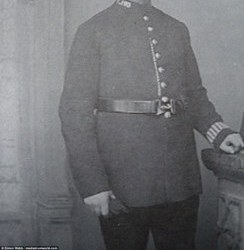
17 June
Station-Sergeant Thomas Green is wounded in the Epsom Riot when 400 Canadian troops attack the police station after two soldiers had been arrested.
18 June
The Dáil establishes the National Arbitration Courts.

19 June
The Dáil approves the First Dáil Loan (for £500,000)
20-21 June
Greek forces suffer 30-80 killed and 40 wounded in the Turkish raid on Erbeyli. 72 Turkish civilians are abducted and executed by Greek troops as a warning against future raids.
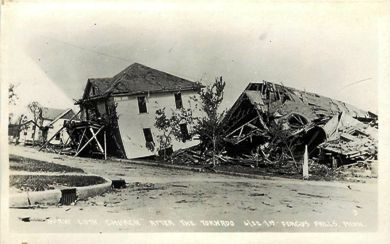
22 June
A tornado kills 57 people in Fergus Falls, Minnesota.
Greek units suffer 30 killed and 40 wounded in the Turkish raid on Erikli. This causes Greek forces to retreat.
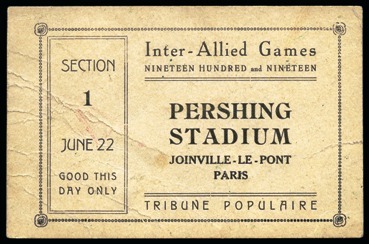
Approximately 1,500 servicemen or ex-sevicemen from 18 countries compete in the Inter-Allied Games in Le Stade Pershing outside of Paris.
23 June
RIC Detective D.I. Michael Hunt is shot twice in the back in a scuffle with IRA volunteers Jim Stapleton and James Murphy in Thurles, Co. Tipperary.
24 June
Two RIC officers are attacked and disarmed near Meenascarthy, Co. Kerry. Ten IRA volunteers are later arrested and five of them sentenced to gaol.
25 June
24 Americans are killed and 25 wounded repelling Red Army forces at the Battle of Romanovka. The Red army lose a similar number of men.
26 June
Castletownbere born William Martin Murphy dies in Dublin (b. 1845)

28 June
The Treaty of Versailles is signed in the Hall of Mirrors.
Two British soldiers are killed while on patrol by the Irish Republician Army.
Ion Dezideriu Sîrbu is born in Petrila (d. 1989)
29 June
Dáil Courts are established to hear civil cases.

Cork players wear red jerseys for the first time as they play against Tipperary in the Munster Hurling Semi-Final at the Cork Athletic Grounds in Ballintemple. The admission price is increased from sixpence to 1 shilling which results in protests that include sections of sheet iron being torn down at one end of the grounds. The result of the match is Cork 2-4 Tipperary 2-3.
1 note
·
View note